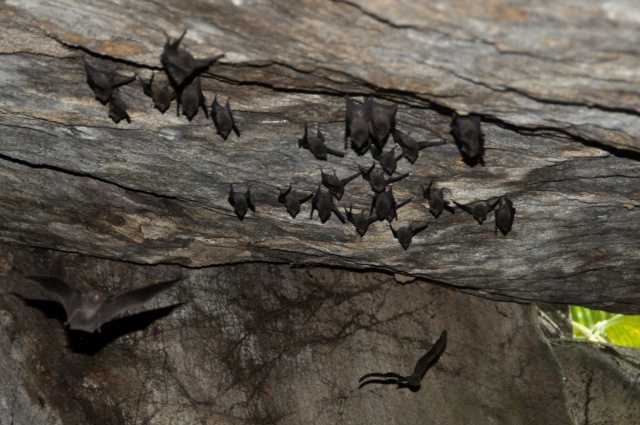Silhouette’s volcanic origin creates ideal habitat for Seychelles' rarest species

One of the caves on Silhouette home to one of the world’s rarest mammals, the Seychelles’ sheath-tailed bat. (Island Conservation Society)
(Seychelles News Agency) - The high elevations of Silhouette -- Seychelles' third-largest granitic island -- has created the ideal habitat for some of the island nation’s rarest species, says a local geoscientist.
Silhouette has the second-highest land mass in the Seychelles’ archipelago in the western Indian Ocean. It reaches 740 metres above sea level. Patrick Samson, a local geoscientist, told SNA on Friday that this is due to the island’s volcanic origin.
According to a publication by W. E Stephens of St. Andrews University in Scotland, the island was formed by a volcanic eruption similar to that of Mount St. Helen in the western US that erupted in 1980.
The island’s steepness and difficult terrain have spared it from extensive ecological damage caused by forest clearance like other granitic islands. It is therefore a perfect location for Seychelles' rarest flora and fauna.
 |
| Silhouette’s steepness and difficult terrain have spared it from extensive ecological damage (Seychelles News Agency) Photo License: CC-BY |
Home to the Seychelles’ sheath-tailed bat
The caves on Silhouette, which Samson says are another aspect of the island’s volcanic history, are home to one of the world’s rarest mammals, the Seychelles’ sheath-tailed bat (Coleura seychellensis), known as sousouri bannann in Creole.
Only about 100 of these small bats -- which can be distinguished from others by the sheath behind their hind legs -- are left in the world. Endemic to Seychelles and listed as critically endangered, the Seychelles’ sheath-tailed bat can be found on Silhouette and two locations on the main island of Mahe.
To ensure the protection of the species, a two-year project is currently ongoing by the Island Conservation Society. It includes a school awareness campaign started in 2015.
“With less than a 100 left, it is important that we raise public awareness particularly in school to get kids excited so they can think about conserving the sousouri banann,” said Genevieve Berry, a volunteer from Queensland, Australia who is assisting the Island Conservation Society.
Berry says so far educational activities were done in school on Mahe and included road shows and class presentation.
“Many of the school kids have heard of bats in Seychelles but many of them don’t realise that sousouri bannan is different than the others. We give them an understanding of the habitat and what poses as threats to the species like pesticides and spray.”
 |
| Wildlife club members participated in the Carnival International de Victoria as part of the educational campaign (Louis Toussaint, Seychelles News Agency) Photo License: CC-BY |
Berry says the programme is working well with the primary school students because they already have a topic in their curriculum on endangered species.
As part of the sensitization campaign for the public, a group of wildlife club members took part last weekend in the Carnival International de Victoria, dressed in their sousouri bannann costumes.





